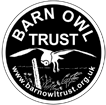Tawny Owl nestboxes
Tawny Owl nestbox plans
There are two basic types of nest boxes for Tawny Owls. The upright design as shown in Fig. 1 is normally strapped or nailed to the side of a vertical tree trunk or major branch.
The sloping type as shown in Fig. 2 is designed to be strapped or tied to the underside of a sloping side branch at an angle of approximately 45°. Exact dimensions are not too critical, provided that the box is big enough with an entrance hole not less than 200mm square. The upright type box should be fitted with a thick roofing felt top. Both types must have several large drainage holes in the bottom, not less than 12mm diameter.
How to build a Tawny Owl nestbox
Use pressure treated (tanalised) 18mm planks, or pressure treated 18mm softwood ply (known in the building trade as CDX). Please avoid using hardwood ply unless it is stamped ‘FSC Approved’. If pressure treated timber is not available, use a brush-on preservative and ensure that all the edges are treated before assembly. Whichever timber treatment you use be sure to follow the manufacturers’ instructions and make sure that the box is completely dry before erection. Assemble the box using galvanised 50mm (2″) nails and/or brass or plated screws.
Where to position a Tawny Owl nestbox
The most common nest site is usually a mature tree in a copse or larger stand of trees. Moist deciduous woodland seems to be the preferred choice in Northern Europe though nesting sites in coniferous forests are not uncommon. Nestboxes need to be sited in one of the most mature trees in the woodland, preferably within the woodland itself rather than on the fringes.
Fix your nestbox securely to a large tree as shown in Fig. 3. In a remote undisturbed area the box can be placed as low as 3 metres (10’) above the ground. In more populated areas or places where vandalism may occur, the box should be secured not less than 3.7 metres (12’) up or higher if possible. Try to face the box entrance away from the prevailing wind (generally this means avoiding the west or south-west).
Vertically mounted boxes can be fixed to the tree using a ‘Nestbox Hanging Kit’ purchased from our online shop. Vertical or angled boxes can be fixed using galvanised nails and/or stainless or plated screws; or alternatively use ratchet straps or polypropylene rope. Unless the tree is dead, always allow some ‘growing room’ (see below).
NB: A ‘Nestbox Hanging Kit’ is included with all Barn Owl Trust ready-made tree nestboxes.
You are responsible for your own safety – assess the risks and be careful.
Clearing out the nestbox
Clearing out Tawny Owl nestboxes in order to maintain their internal depth is not as crucial for Tawnies as it is for Barn Owls. Tawnies can manage perfectly well without a deep cavity to nest in partly because the young leave the nest for good at around 4 weeks of age and enter a phase known as ‘branching’ during which the adults will feed them anywhere. Nevertheless, occasional clearing out is advisable especially if the box has been filled by Jackdaws. Early autumn is the time of year when the box is least likely to be occupied although care should always be taken as a squirrel or bird might be inside. Never put your face in the nestbox entrance unless you know there is nothing alive inside. While you are up there, check that the box is secure and still in reasonable condition.
If there is any doubt that the box will still be up by the next time you check, strengthen its attachment or take it down and re-hang it. In the case of tree-mounted nestboxes, be aware that trees expand as they grow and nestboxes can literally be pushed off as the exposed parts of screws and nails gradually disappear into the tree. Similarly, anything wrapped around a trunk or branch may need to be slackened off.
As far as timing is concerned, Tawny Owls breed about a month earlier than Barn Owls so first eggs are typically laid around mid-March. However, eggs have been reported as early as December. Early autumn is therefore usually the best time for any works.
Tawny Owl nest with Blackbird and Jay feathers



